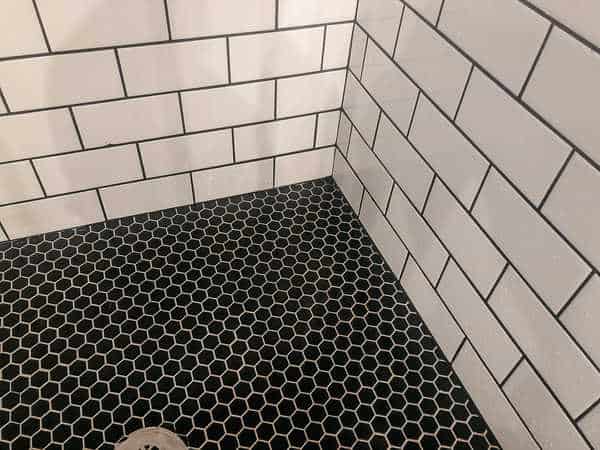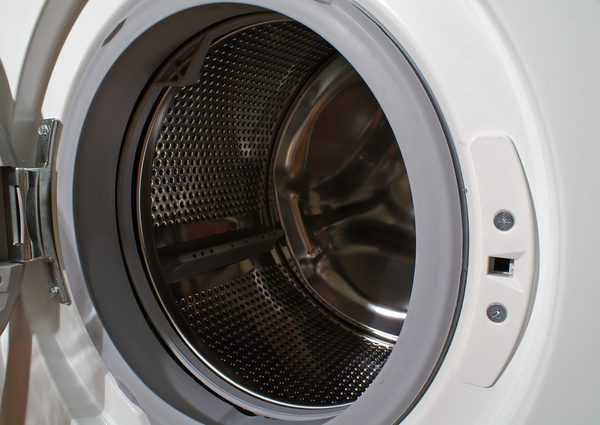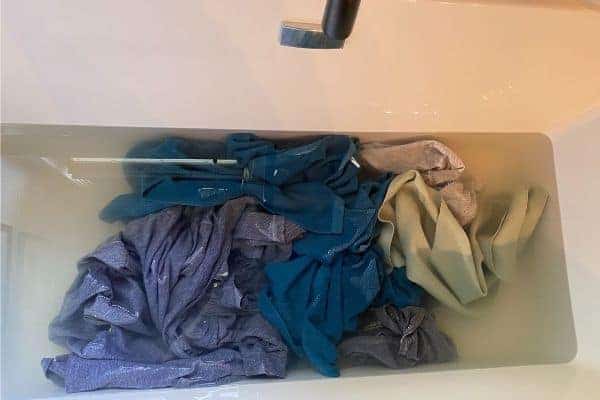How to get rid of pantry moths: solutions that work!

If you’ve ever opened your pantry and had little moths flying into your face you’ve probably got a pantry month infestation.
Also called indian meal moths, these pesky critters can be quite difficult to get rid of. Learn how and why pantry moths take up residence in your home and how to get rid of pantry moths for good with these helpful tips.
What do pantry moths look like?
Pantry moths are about ½ of an inch in length, slender and have a brownish/tan hue to them. Even if you don’t actually see the moths, you might have an infestation if you notice any of the following:
- A putrid smell
- Webbing in corners of pantry or in food items
- Larvae — these will look like small, whitish/yellow worms about ½ inch in size
- Cocoons
- Any moths about ½ -⅔ inch in size with brown/tan/copper coloring
Why do I have moths in my pantry?
If you discover you have Pantry moths in your home, it’s not because of a lack of cleanliness on your part. In fact, it’s likely that something you bought at the store was infested with pantry moths or larvae and that’s how they wound up in your home in the first place.
Despite their small stature, indian meal moths can actually chew through cardboard and plastic!
Besides coming home with you from the grocery store, pantry moths can get in through doors, windows or any cracks you may have in your home.
You find the moths in your pantry because they need a food source, and turns out, they love eating the items you store in your pantry like crackers, pasta, and cookies. They also need a place to reproduce and lay their eggs.
Are pantry moths harmful?
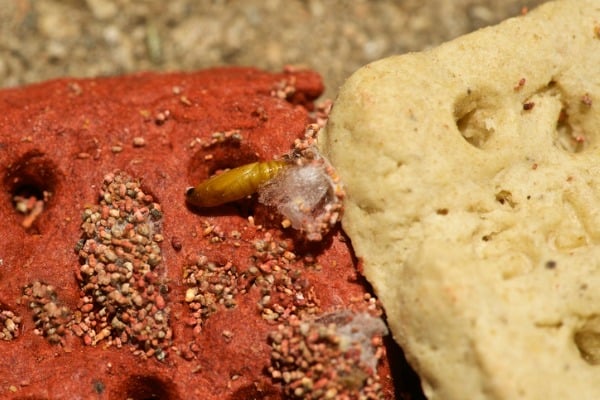
Thankfully, pantry moths are not harmful to people!
They are; however, harmful to your food. By the time you see an actual moth, the pantry moth has gone through it’s full lifecycle, and has likely done this while burrowed in food you keep in your pantry.
A single pantry moth can lay around 400 eggs! The eggs are a greyish/white tint and will hatch in roughly one week. After that, they’re in the larvae stage, which is actually where most of the real damage to your pantry items takes place.
During the larvae stage the little worm-like critters will go on an eating binge, consuming everything in reach– making their way through your bread, flour, rice, crackers and cookies. They’re in this stage for an average of 42-56 days.
How do I get rid of pantry moths?
Now that you know how to identify pantry months, let’s talk about what you’re dying to know–how to get rid of them!
Step #1: Get rid of everything
This step is a hard pill for some people to swallow, but to be absolutely sure, it’s best to get rid of everything in your pantry in a cardboard or plastic container. Remember, pantry moths will eat right through those materials–so unless it’s in glass or tupperware, get rid of it.
If you’re not willing to get rid of everything, you need to inspect all of your food with a fine-tooth comb, or put questionable items in your freezer for at least four days to kill everything.
Step #2 Take shelves out of your pantry
You want to remove the shelves out of your pantry (if possible) because it’s likely that you’ll find cocoons inside the little holes and rivets that are usually found around your shelves.
Step #3 Disinfect your pantry
Most people opt for bleach for heavy duty jobs, but in this case, vinegar is much better. Mix 1 part vinegar to 3 parts water and add 5-10 drops of peppermint essential oil (moths hate this scent) in a squirt bottle.
Thoroughly wipe down every single surface, getting in any cracks, holes or tiny spots that eggs or larvae could be hiding.
When you’re finished wiping everything down, add some bay leaves to the area (another known pantry moth repellent).
While you’re wiping everything down, it’s a good idea to use a pantry moth trap to attract the remaining pantry moths who have been displaced during your cleaning binge.
I used the Terro traps and found they worked well. Place the trap at the opposite end of the room as your pantry, as you don’t want to attract anything new to your clean pantry. The terro traps use phermones and the moths are attracted to the scent so it doesn’t really matter that the traps aren’t placed inside the actual pantry.
Immediately following the disinfectant, take a vacuum cleaner and vacuum out your entire pantry, getting every single nook and cranny. Don’t leave a single crumb behind. Vacuum areas that are close to the pantry, as well– including the ceiling directly above your pantry.
To finish up, take a toothpick and get into the corners of your cabinets, ensuring cocoons aren’t left behind.
Don’t empty your vacuum inside, but rather, go outside and empty it into a garbage bag. Place the garbage bag next to your trash can and place in right before your trash is picked up. You don’t want to take any chances!
Step #4 let your pantry “air out”
After you’ve cleaned your pantry and hopefully removed any remaining evidence of the moths or larvae, don’t immediately put your food back.
If you’ve had a pretty bad infestation consider keeping food out of your pantry for weeks. Larvae will starve without food to eat, so keeping things out of your pantry will help the process along. Make sure to inspect anything new that you bring into the house. Some people even store grains in the freezer to ensure you’re not brining in new pantry moth infestations.
**Don’t forget to check these little known areas pantry moths are prone to hiding out in:
- Around the inside groves of the peanut butter top, or mason jar tops
- Under canned goods, they’ve even been found under canned good wrappers!
- Inside the holes carved out for adjustable shelving
- Under shelving liners
- Door hinges
Can a pest exterminator kill pantry moths?
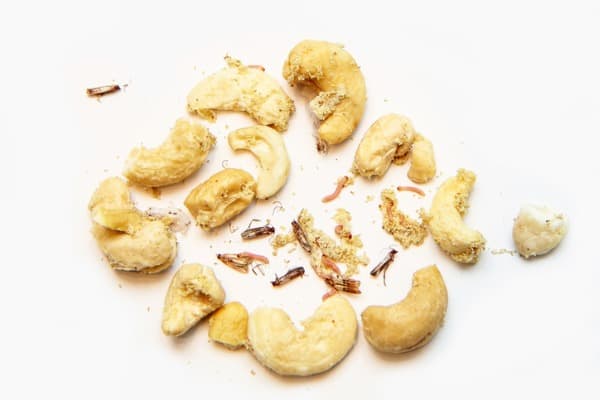
Typically, calling an exterminator won’t do much in the way of solving your pantry moth problem. Unfortunately, pantry months have developed resistance to the common agents used to kill them.
Your best bet is to completely remove everything from your pantry and thoroughly clean from top to bottom.
Can I just use a trap to get rid of pantry moths?
Pantry moth traps use pheromones to attract male moths. Using these traps will hopefully catch most of the male moths and stop breeding, but it won’t do anything in the way of attracting female moths and finding moths that are in the larvae or cocoon stage.
Traps are an effective part of the process but should not be used independently of the instructions outlined above.
Additional solutions for getting rid of pantry moths
After you’ve exhausted the above steps, here are some more drastic measures you can take:
Try Trichogramma Wasps
Trichogramma wasps or parasitic wasps are microscopic wasps that are designed to destroy the eggs of pantry moths. Often times, people are able to catch the moths themselves, but they have trouble finding every single egg, which is where parascitic wasps come in!
Before you freak out, don’t worry- these insects are virtually invisible and won’t bite or sting you. These cause no harm to pets either and are completely natural. Trichogramma wasps are even used to prevent pests on vegetable and fruit crops!
The pin-sized wasps come in packets on strips of paper and you just put them in your pantry. Depending on the severity of your problem, you can repeat this process monthly until all moths are gone.
Buy trichogramma wasps on Amazon.
Try diatomaceous earth
After removing everything from your pantry and throwing away pantry items or placing them in the freezer, lightly sprinkle the pantry with food-grade diatomaceous earth.
How long does it take to get rid of pantry moths?
It are extremely careful and clean your pantry with a fine-tooth comb, you may be able to get rid of pantry moths in a week or two. However, due to the lifecycle of the pantry moth and the intricate spots larvae can get in, you be dealing with the problem for a while.
The safest bet is to keep everything out of the pantry for a few weeks to ensure the pantry moths are gone for good. Remember, the larvae need to eat, so if the food is gone, they’ll die.
Can pantry moths eat through plastic?
Yes, pantry moths can eat through plastic and cardboard! Don’t store anything in your pantry that isn’t in hard plastic or glass containers. Mason jars work well for storing snacks, and you can use these storage containers for cereals, pasta and flour.
What attracts pantry moths?
Indian meal moths are partial to anything in your pantry, from grains and rice to even hot chocolate mix and spices. Nothing is safe.
Additionally, pantry moths tend to be particularly attracted to pet food and surprisingly, bird seed. Make sure to store bird seed outside in a sealed container.
Final thoughts on getting rid of pantry moths for good
Nip the pantry moth problem in the bud by getting rid of all pantry items and thoroughly cleaning your entire pantry. Don’t take any chances by keeping around food items you don’t think are compromised. If you really want to keep some pantry items, store them in the freezer for at least four days to be safe!

